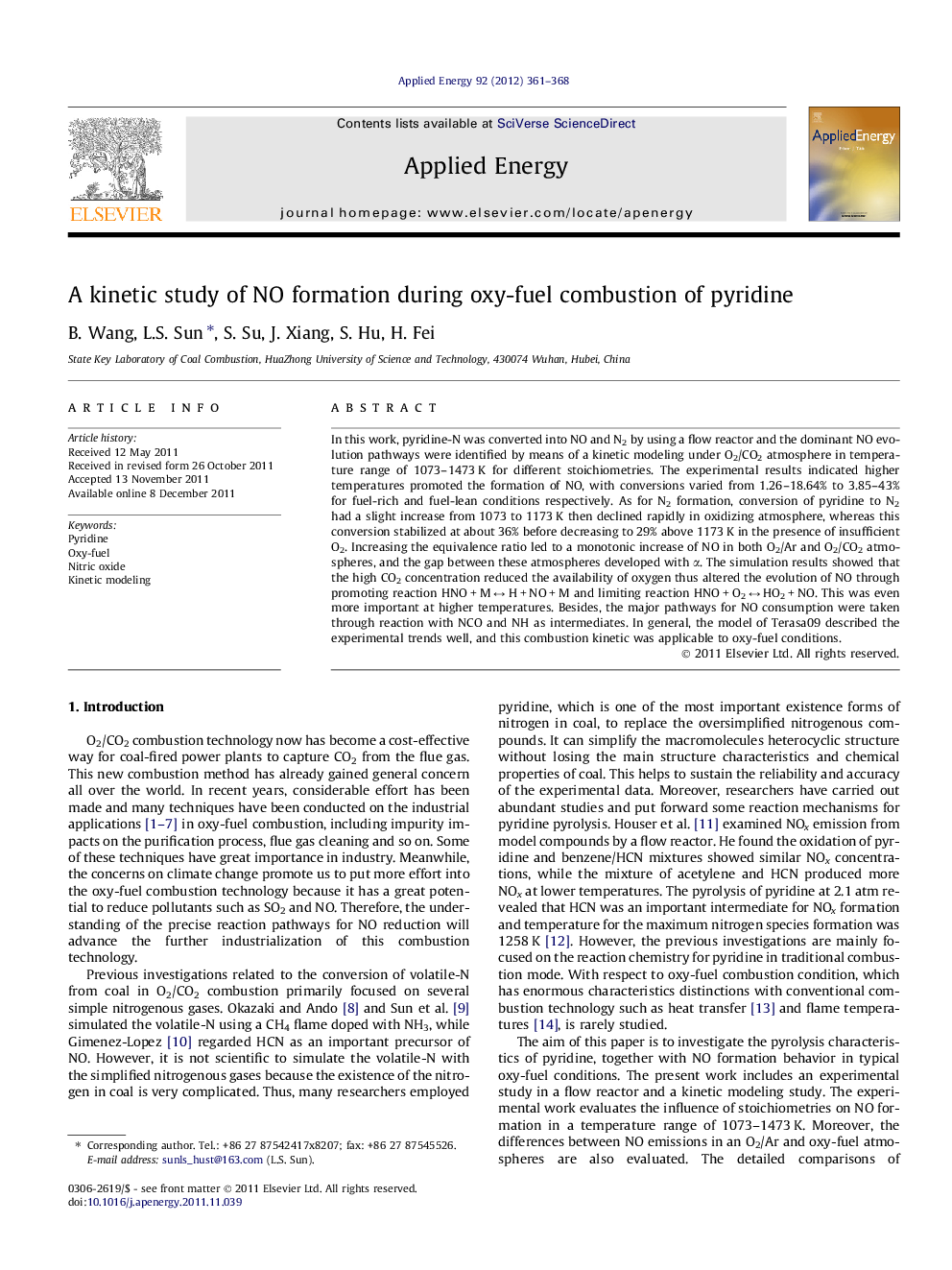| کد مقاله | کد نشریه | سال انتشار | مقاله انگلیسی | نسخه تمام متن |
|---|---|---|---|---|
| 243613 | 501931 | 2012 | 8 صفحه PDF | دانلود رایگان |

In this work, pyridine-N was converted into NO and N2 by using a flow reactor and the dominant NO evolution pathways were identified by means of a kinetic modeling under O2/CO2 atmosphere in temperature range of 1073–1473 K for different stoichiometries. The experimental results indicated higher temperatures promoted the formation of NO, with conversions varied from 1.26–18.64% to 3.85–43% for fuel-rich and fuel-lean conditions respectively. As for N2 formation, conversion of pyridine to N2 had a slight increase from 1073 to 1173 K then declined rapidly in oxidizing atmosphere, whereas this conversion stabilized at about 36% before decreasing to 29% above 1173 K in the presence of insufficient O2. Increasing the equivalence ratio led to a monotonic increase of NO in both O2/Ar and O2/CO2 atmospheres, and the gap between these atmospheres developed with α. The simulation results showed that the high CO2 concentration reduced the availability of oxygen thus altered the evolution of NO through promoting reaction HNO + M ↔ H + NO + M and limiting reaction HNO + O2 ↔ HO2 + NO. This was even more important at higher temperatures. Besides, the major pathways for NO consumption were taken through reaction with NCO and NH as intermediates. In general, the model of Terasa09 described the experimental trends well, and this combustion kinetic was applicable to oxy-fuel conditions.
► Pyrolysis and combustion studies of pyridine are conducted on a flow reactor.
► We employ model compound to simulate fuel-nitrogen conversion in O2/CO2 atmosphere.
► Pyrolysis products serve as the input parameters of combustion simulation.
► High concentration of CO2 promotes reaction of HNO + M ↔ H + NO + M to suppress NO formation.
Journal: Applied Energy - Volume 92, April 2012, Pages 361–368